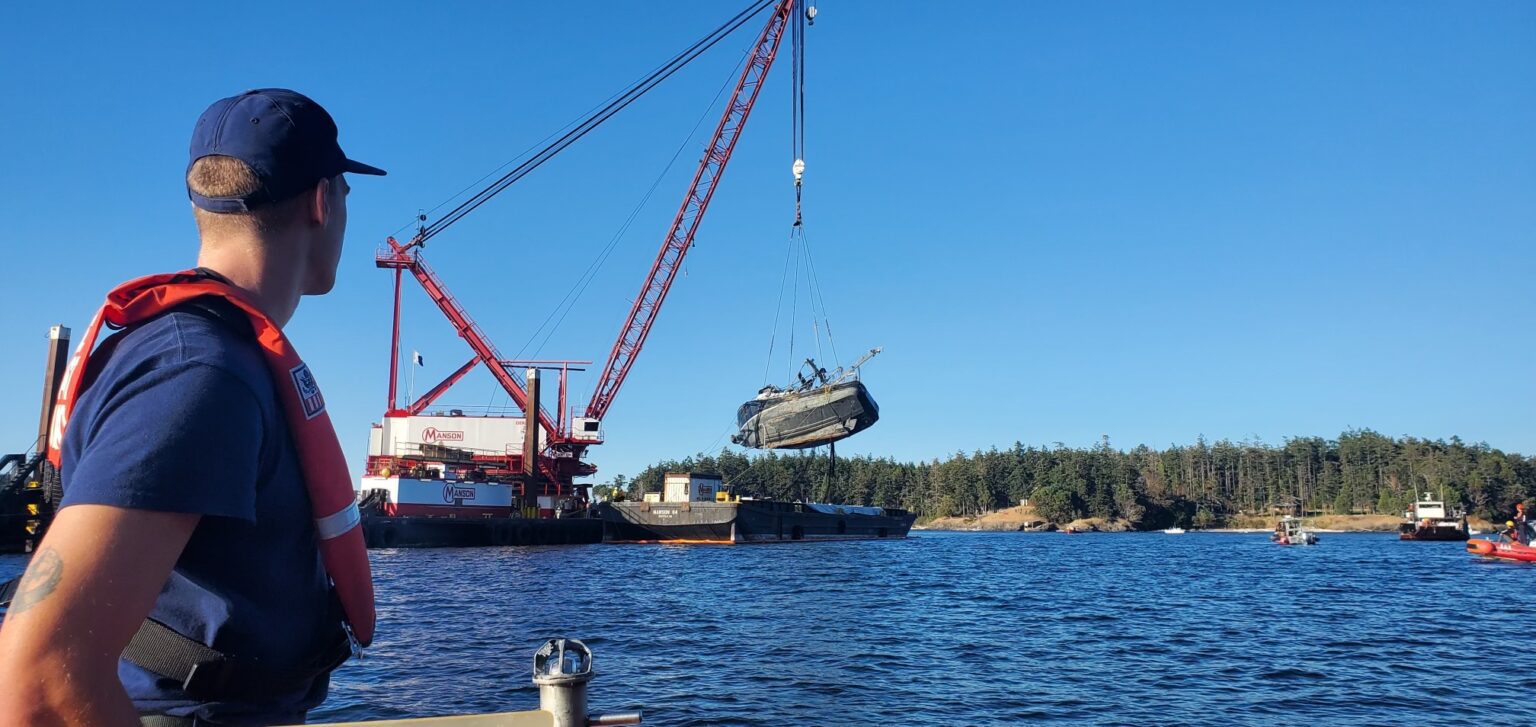The Aleutian Isle fishing vessel has been removed from the waters off San Juan Island after 39 days, the U.S. Coast Guard announced Thursday night.
Efforts to recover the vessel, which was under more than 250 feet of water in the Haro Strait, were complicated by environmental concerns and short diving windows.
“We are so pleased to see the vessel safely out of the water,” USCG Commander Kira Moody wrote in an announcement. “The unique environment of the San Juan Islands and location of the vessel made this a complicated and technical response. Through the team’s expertise we were able to overcome any challenge safely and efficiently.”
Response crews successfully placed the vessel onto a salvage barge Wednesday night after initial removals were stalled over the weekend. The boat was initially lifted off the sea floor last week, but remained at the surface due to safety concerns. Responders towed the vessel to Mitchell Bay, where it was removed from the water Wednesday.
When the fishing vessel sank near Sunset Point on Aug. 13, it had about 2,500 gallons of diesel and 100 gallons of motor oil on board, prompting significant environmental concerns about local wildlife.
Oil sheens were visible on the surface of the water throughout the recovery process.
The waters off the San Juan are popular hunting grounds for the Southern Resident orca pods — critically endangered salmon-eating orcas that live in Puget Sound. Two of the pods – J and K – were in close proximity to the spill when the vessel initially sank, but have remained outside the area since then.
Observers from the Unified Command, made up of leadership from responding agencies including the USCG and the Washington State Department of Ecology (DOE), tracked the orcas and had diversion protocols in place in the event they returned.
“It’s a relief to have the vessel finally out of the water,” said Don Noviello, Washington Department of Fish and Wildlife wildlife branch director. “The whale deterrence team has spent countless hours monitoring and protecting the Southern Residents and other species from any sheening.”
Though the vessel has been moved to a mainland facility for additional investigation, environmental experts will remain on the scene to monitor environmental health.
“This is a big success for everyone who worked, in so many different ways, to make this happen,” said Dave Byers, DOE’s on-scene coordinator. “Although the vessel was removed from the water, we will still monitor for any residual fuel that could impact the shoreline or wildlife. We will continue to have wildlife experts and shoreline assessment teams actively surveying the area looking for potential oil impacts for the next several days.”




